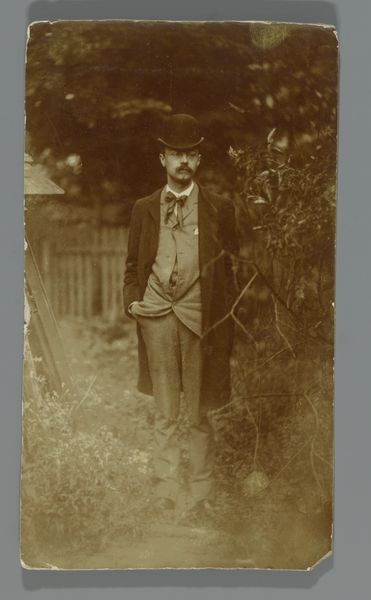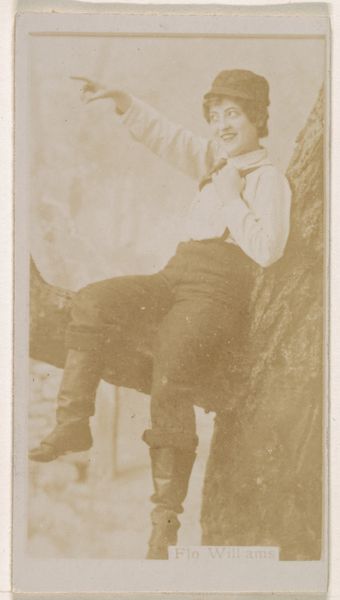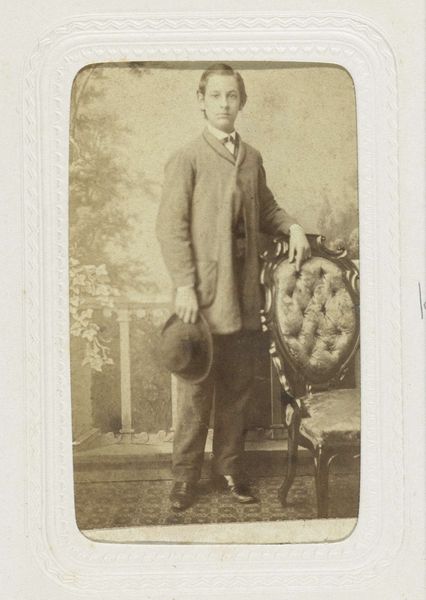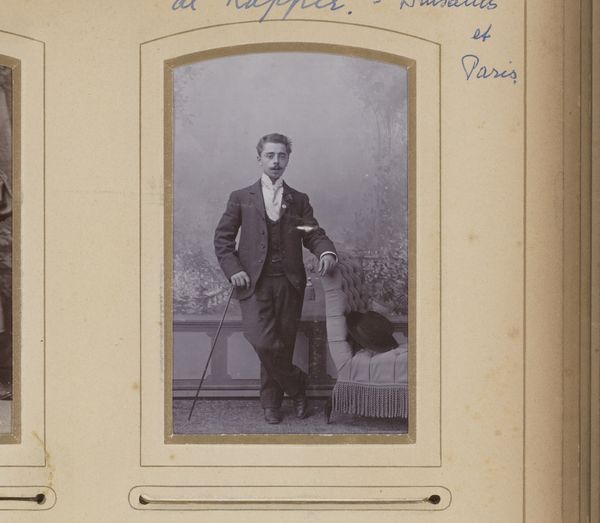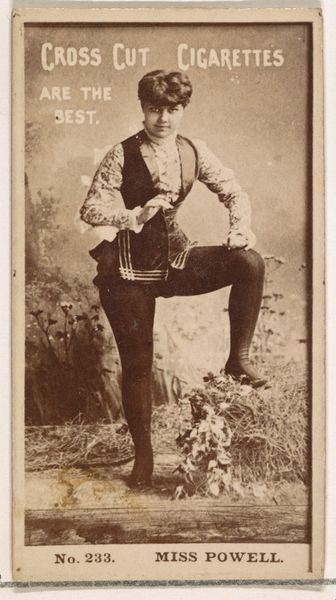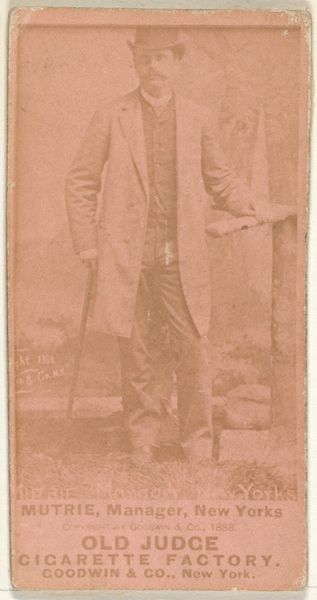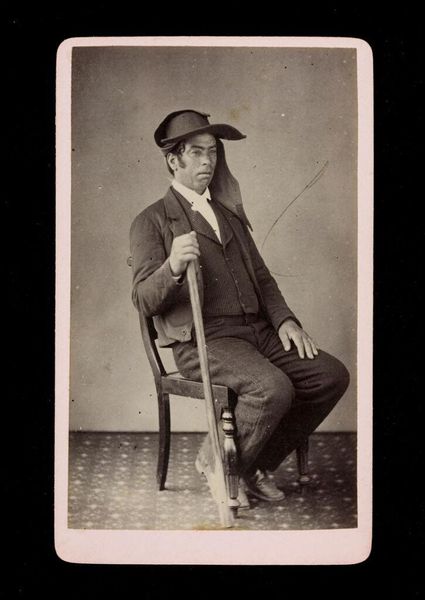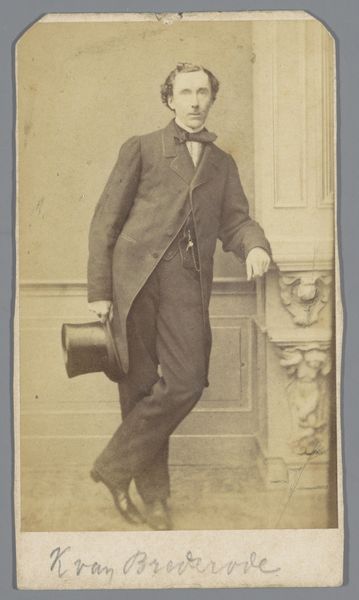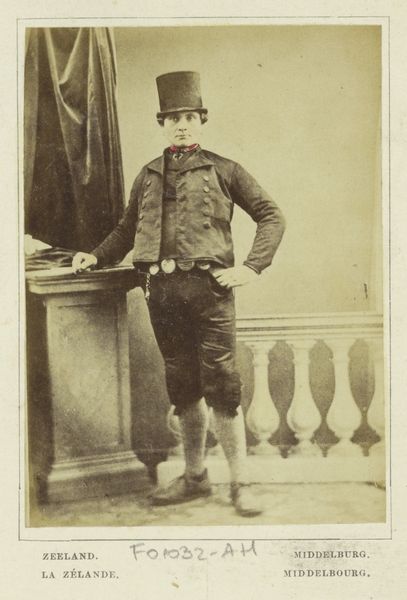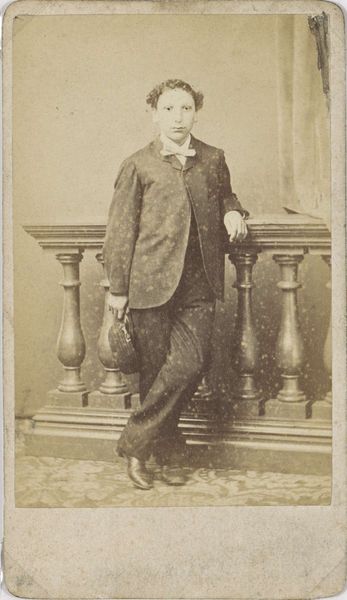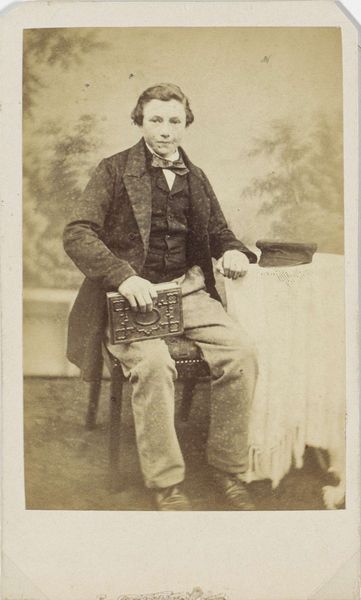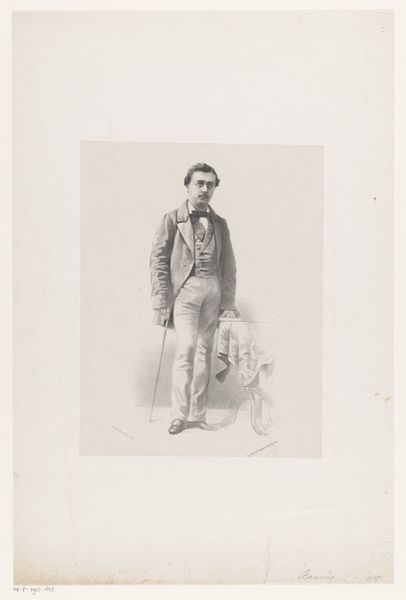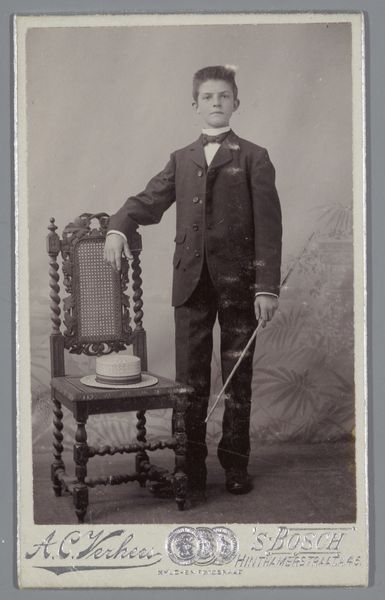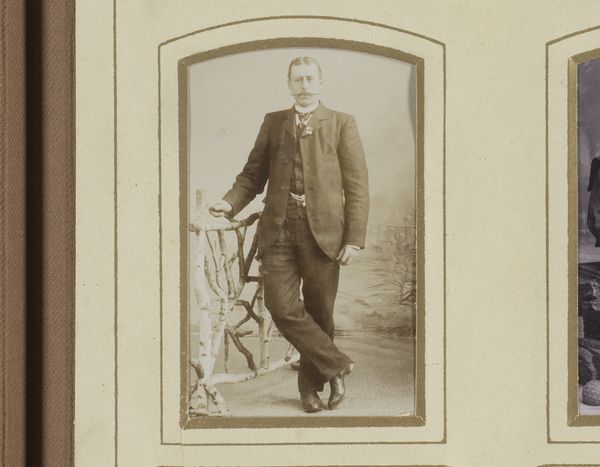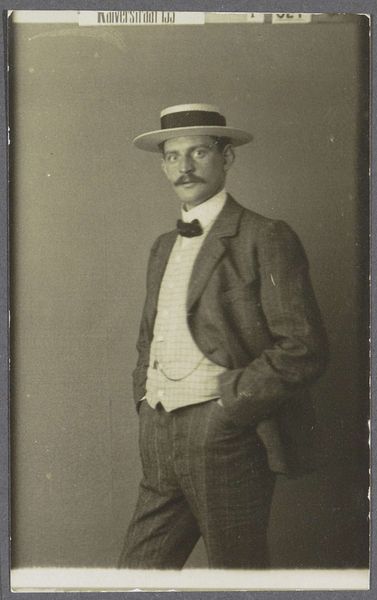
Dimensions: image: 24.7 × 19.4 cm (9 3/4 × 7 5/8 in.) sheet: 25.7 × 20.3 cm (10 1/8 × 8 in.)
Copyright: National Gallery of Art: CC0 1.0
Editor: This is James Van Der Zee’s “Portrait of a Man and Dogs,” taken in 1931. It's a black and white photograph, and it strikes me as quite formal, almost staged. What’s your interpretation? Curator: Indeed, it's a powerful image ripe with socio-historical context. Van Der Zee, working during the Harlem Renaissance, wasn’t just capturing images, he was crafting narratives. How does the man's attire – the suit, the hat – speak to you in relation to the broader cultural moment? Editor: I see it as a sign of respectability, almost like he’s trying to project a certain image. Is that a fair reading? Curator: Absolutely. Think about what it meant for African Americans to control their own image in a period defined by pervasive stereotypes. The studio portrait became a site of self-definition, resistance, and aspiration. These weren't simply photographs, they were carefully constructed statements. What do you make of the dogs? Editor: They look like prized possessions. Status symbols, maybe? Curator: Precisely! The dogs signal affluence, belonging. They’re incorporated into this crafted image of the self, contributing to a narrative of success and social mobility in a community striving for recognition and equality. Van Der Zee provides us with a window into the aspirations of a community. Editor: That's fascinating! I hadn’t considered how much agency the subjects had in these photographs. Curator: Exactly. These portraits serve as lasting documents of Black life. Through them, we challenge conventional understandings of history and celebrate the diverse realities within it. Editor: I'll definitely look at portraiture differently now! Thanks for shedding light on the social and historical context.
Comments
No comments
Be the first to comment and join the conversation on the ultimate creative platform.
